What color is the puerto rican flag: The Color of Puerto Rico’s Flag
The Flag of Puerto Rico: History, Meaning, and Symbolism
© Artgraphixel/Shutterstock.com
More Great Content:
↓ Continue Reading To See This Amazing Video
Puerto Rico is a unique place with rich culture. It is a very popular place to visit, especially during warm summers. The warm beaches are clear and clean and everywhere. Puerto Rico is also home to El Yunque, a tropical rain forest with waterfalls and home to many animals like the coqui. The island also has many mountains and rivers that flow through them. Puerto Rico isn’t just stunning, but is also known for its many types of music.
Puerto Rico is a territory of the United States with a form of citizenship. The flag is easily identifiable but is sometimes confused with the Cuban flag which has the same design with the colors reversed. The flag of Puerto Rico has changed a few times and has a lot of meaning. Are you ready to discover the history, meaning, and symbolism behind Puerto Rico’s flag? Keep reading to learn more.
Where is Puerto Rico?
Puerto Rico is a U.S territory in the Caribbean. Its consists of one main island and other smaller ones including Vieques and Culebra. Puerto Rico is situated between the Caribbean Sea and the North Atlantic Ocean. This beautiful island is east of Dominican Republic. Puerto Rico is the third largest island in the U.S and has a surface area of 3,515 square miles.
Puerto Rico is a U.S territory in the Caribbean.
© wael alreweie/Shutterstock.com
The History of Puerto Rico
Puerto Rico has a long history which starts with the Ortoiroid culture from the Orinoco region in South America. Experts believe they settled on the island over 4,000 years ago. However, by the time Christopher Columbus landed in Puerto Rico, the dominant population was Tainos. The Taino people are the descendants of Arawak that settled in the Caribbean. They traveled to the island and called it home. The Taino population were hunters and gatherers and called the island Borinquén and themselves boricuas. Puerto Ricans today still refer to themselves as boricuas.
Puerto Ricans today still refer to themselves as boricuas.
Spanish Rule
On November 19, 1493, Christopher Columbus landed in Puerto Rico and declared it San Juan Bautista. On August 8, 1508, Ponce De Leon founded the first European colony on the island. Soon after, the Spanish settled in a nearby islet on the coast, named Puerto Rico. This was later flipped as the island is called Puerto Rico and the islet, also the current capital of the Commonwealth, is San Juan. The Tainos were enslaved in the first encomienda system.
In 1511, the Tainos had enough and rebelled against the Spanish. Agüeybaná II planned the revolt and Urayoán ordered his warriors to drown Diego Salcedo, a Spanish soldier. They tested his death to see if they were really immortal and watched over his dead body for three days. However, the revolt did not last long as Ponce De Leon’s soldiers were too powerful. Sadly, the Taino population declined rapidly because of illnesses brought by the Spanish, famine, and suicide. The Tainos also fled to the mountains and mixed with the Spaniards and Africans. Spanish rule lasted until 1898.
The Tainos also fled to the mountains and mixed with the Spaniards and Africans. Spanish rule lasted until 1898.
United States Rule
After the Spanish-American rule and the ratification of the Treaty of Paris of 1898, Puerto Rico was placed under the United State’s military control. Things changed quickly, including the Puerto Rican peso which was switched to the United States dollar. The Foraker Act of 1900 stopped military rule and created the Supreme Court of Puerto Rico. Tobacco, sugar, cigar, and coffee were heavily produced and young children and women worked in the factories and fields.
After the Spanish-American rule and the ratification of the Treaty of Paris of 1898, Puerto Rico was placed under the United State’s military control.
©Maridav/Shutterstock.com
During the early 1900s, the island was politically divided and still is today. Some people want statehood, while others want to remain with their status or declare independence. Things changed a lot for the people on the island when the Jones Act of 1917 was passed. This act, signed into law by President Woodrow Wilson gave the citizens of Puerto Rico a form of citizenship, but forced goods to come through the U.S. before the island, making products more expensive.
This act, signed into law by President Woodrow Wilson gave the citizens of Puerto Rico a form of citizenship, but forced goods to come through the U.S. before the island, making products more expensive.
Unrest and Strict Rule
By the 1930s, there was a lot of unrest leading to massacres and many arrests. For example, on March 21, 1937, a peaceful march was held in Puerto Rico to commemorate the ending of slavery in Puerto Rico in 1873. The US-appointed colonial Governor of Puerto Rico, General Blanton Winship ordered the police to open fire at the crowd, resulting in the death of 20 people and the injuries of 100-200 more. A little over a year later, the same general participated in a march celebrating the United States’ invasion of Puerto Rico in Ponce.
From 1948 to 1952, the U.S. became very strict with Puerto Rico, trying to Americanize the territory. It was a felony to wave Puerto Rico’s flag. You were only permitted to own the flag of the United States. It was also illegal to sing a patriotic song.
Modern History
Despite the United States attempts at erasing the identity and culture of Puerto Ricans, the food, language, and culture remain. However, Puerto Rico is in a debt crisis with millions of people leaving the island. More Puerto Ricans live outside of the island than those who have remained. Tourism is a huge part of Puerto Rico’s economy bringing in 4 million visitors a year. Puerto Rico has also experienced extreme hurricanes and earthquakes which have resulted in the loss of power, infrastructure, and lives. On September 20, 2017, Hurricane Maria left millions of people without light and food for months and took the lives of thousands of people.
Tourism is a huge part of Puerto Rico’s economy bringing in 4 million visitors a year.
©iStock.com/Alvin Rodriguez Caraballo
History of Puerto Rico’s Flag
Puerto Rico has had many flags starting with the first one brought by Christopher Columbus. He used the royal flag which had a green cross in the middle. The flag was white and on the left side of the cross was a green ‘f’ with a golden open crown. On the right side of the cross, also with a crown, was a ‘y’. When the Spanish took the island as a colony, they used the Spanish flag.
The flag was white and on the left side of the cross was a green ‘f’ with a golden open crown. On the right side of the cross, also with a crown, was a ‘y’. When the Spanish took the island as a colony, they used the Spanish flag.
The Lares revolutionary flag of 1868 was born out of the independence movement. It was inspired by the Dominican Republic as leaders at the time pushed for the unity of the three Caribbean islands. The flag is divided by a white cross in the middle. The two lower corners are red, while the two upper corners are light blue. On the left upper corner is a five-pointed white star.
The current flag was designed in 1892 or 1895. The current flag is based on Cuba’s flag, but with a blue triangle with a white star in the center and 5 stripes alternating red and white. The first theory is that Francisco Gonzalo Marín designed the flag in New York and presented it to the Puerto Rican Revolutionary Committee. The second theory states that Antonio Vélez Alvarado created the flag in his apartment when he was staring at the Cuban flag. This has been disputed by scholar Armando Martí. And who sewed the flag? No one knows for sure! Maria Manuela Besosa, the daughter of the Puerto Rican Revolutionary Committee member Manuel Besosa claims she sewed the flag, which has pushed others to believe her father designed it.
This has been disputed by scholar Armando Martí. And who sewed the flag? No one knows for sure! Maria Manuela Besosa, the daughter of the Puerto Rican Revolutionary Committee member Manuel Besosa claims she sewed the flag, which has pushed others to believe her father designed it.
Meaning and Symbolism of Puerto Rico’s Flag
Puerto Rico’s flag means a lot. The design inspired the flag of Lares which was raised with pride during marches and protests against Spain and the United States. The current flag has three colors. Although some flags use dark blue, light blue is the official color. The blue represents the sky and the ocean surrounding the island. The three red stripes symbolize blood from past brave warriors. Next, the two white stripes represent victory and peace, which they should attain after independence. The iconic white star is the island. Finally, the triangle, since it has three sides, represents the three branches of government. Next time you take a trip to Puerto Rico, admire the flag! It’s now flown everywhere with pride when it once was illegal to do so.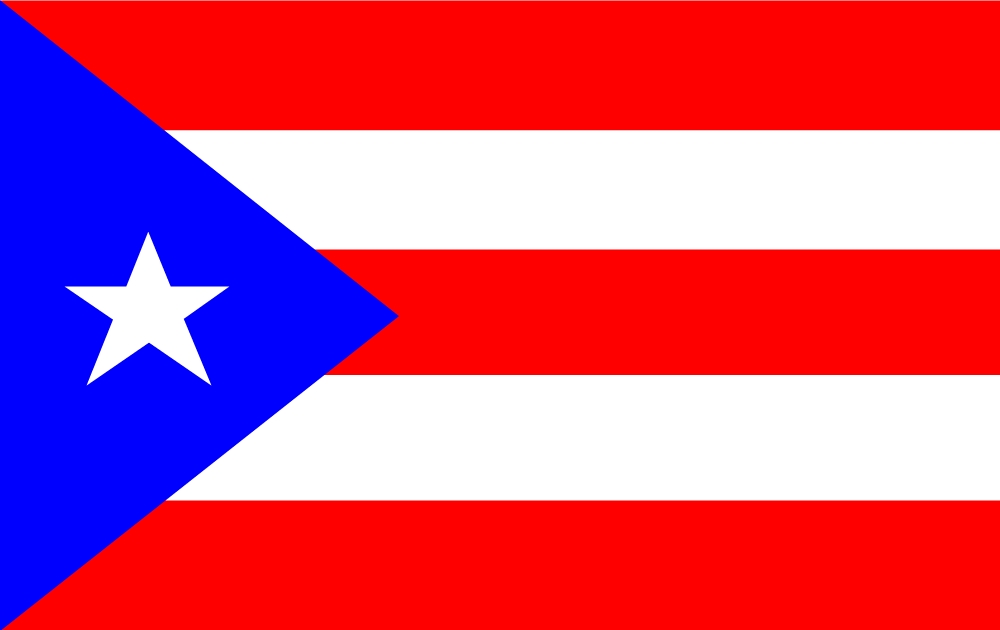
Up Next:
- The Flag of Lesotho: History, Meaning, and Symbolism
- The Flag of Cote d’Ivoire: History, Meaning, and Symbolism
- 10 of the Most Beautiful Waterfalls in Puerto Rico
- The Flag of Equatorial Guinea: History, Meaning, and Symbolism
The Featured Image
The blue represents the sky and the ocean surrounding the island. The three red stripes symbolize blood from past brave warriors. Next, the two white stripes represent victory and peace, which they should attain after independence. The iconic white star is the island. Finally, the triangle, since it has three sides, represents the three branches of government.
© Artgraphixel/Shutterstock.com
Share this post on:
About the Author
I have been a professional content writer for 6 years now, with a large focus on nature, gardening, food, and animals. I graduated from college with an A.A, but I am still pursuing a Bachelors of Marketing degree.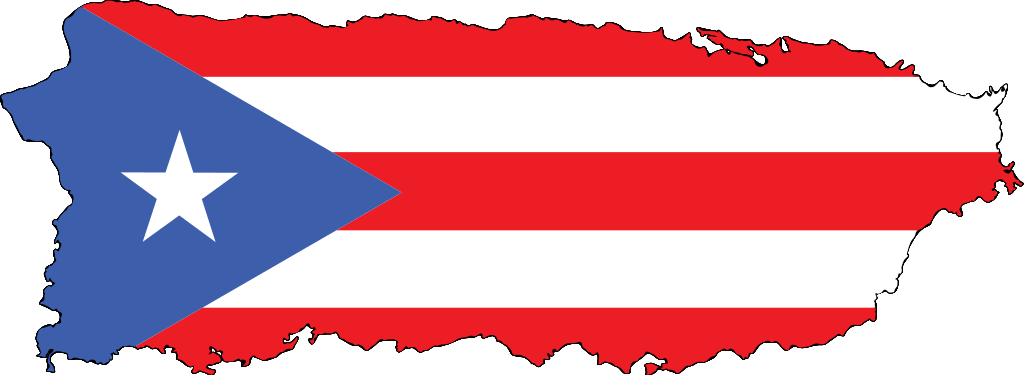 When I am not writing, you can find me in front of my TV with a blanket, snacks, and my fur babies.
When I am not writing, you can find me in front of my TV with a blanket, snacks, and my fur babies.
Thank you for reading! Have some feedback for us? Contact the AZ Animals editorial team.
Puerto Rico State Flag
- States101.com
- Flags
- Puerto Rico
The Puerto Rico flag was formally adopted on December 22, 1895.
Since, Puerto Rico has maintained the same flag for the last 128 years.
The Puerto Rico flag was voted 6th best out of 51 Flags ranked by the North American Vexillological Association.
The 3 main colors in the Puerto Rico flag are #ED0000, #FFFFFF, and #0050F0.
The Puerto Rico flag width is 1.5 times the height. Standard flag size is 3 feet x 4.5 feet.
We also provide high resolution and Scalar Vector Graph (SVG) downloadable images — free of charge.
Go to Flag Downloads.
Buy Your Puerto Rico State Flag Now!
Puerto Rico Flag
The Puerto Rico State Flag. Adopted by State Legislature on December 22, 1895.
Adopted by State Legislature on December 22, 1895.
Colors
| #ED0000 | 45.1% |
| #FFFFFF | 27.6% |
| #0050F0 | 26.9% |
Percentage totals may not equal 100. Colors with less than 1 percent are ignored.
Description
The flag of Puerto Rico comprises of five equal horizontal bands of red and white stripes. A blue isosceles triangle then sits on the hoist side bearing a large white five -pointed star.
Meaning
Designed in 1890 the five pointed white star represents the common wealth of Puerto Rico, whilst the three sided triangle signifies the three branches (executive, legislative and judicial) of the republican government. The three red stripes show the blood that feeds the three branches and the two white signify the rights of man and the freedom of the individual.
History
Puerto Rico is quite commonly known as the 51st state of America although it is actually a commonwealth of the USA and not a state at all. The phrase ‘51st state’ is one that is often heard and refers to areas or locales which have been or are being seriously considered candidates for United States statehood. This has led to some confusion over how many states there really are!
The phrase ‘51st state’ is one that is often heard and refers to areas or locales which have been or are being seriously considered candidates for United States statehood. This has led to some confusion over how many states there really are!
It wasn’t until the Spanish – American Revolution, July the 25th 1898 to be exact, that Spain ceded Puerto Rico to the Americans. By then though the Puerto Rican flag had already been designed and was in use. Its resemblance to the Cuban flag would later go on to cause problems (1950’s) when the Cuban revolution had taken place. US officials became suspicious of those who flew the flag of Puerto Rico and arrested them on charges of insubordination against the US.
The Puerto Rico flag is never flown alone, only in the company of the US flag.
Contribute: This article was written by users like you! If you can improve or add to this article, please Contact Us with your suggestions. Be sure to mention which state you are referring too!
Goto Top
Download Puerto Rico State Flag as a high quality SVG file.
Scaler Vector Images (SVGs) look good at any size. This flag can be used as tiny icons (height less than 50px) or you can make the flag huge (height over 2000px) and still look great!
Or, you can Download All State Flags!
Download Puerto Rico State Flags (SVG)
Images are licensed under CC Attribution-ShareAlike. Link back is optional.
We also provide a large black and white Puerto Rico Flag Line Drawings for download.
This coloring-book style image are perfect for student activities.
Download Puerto Rico State Flag Line Drawings (JPG)
Download Puerto Rico State Flag Line Drawings (PDF)
Link To Us
If you use these flags on your own website, please provide a link back to us. Your link ensures others can find these images too.
When using our black and white line drawings, a link back to use is required. For all other flags, a link back is optional but greatly appreciated.
Simply copy the code below and insert it on pages where you display the flags.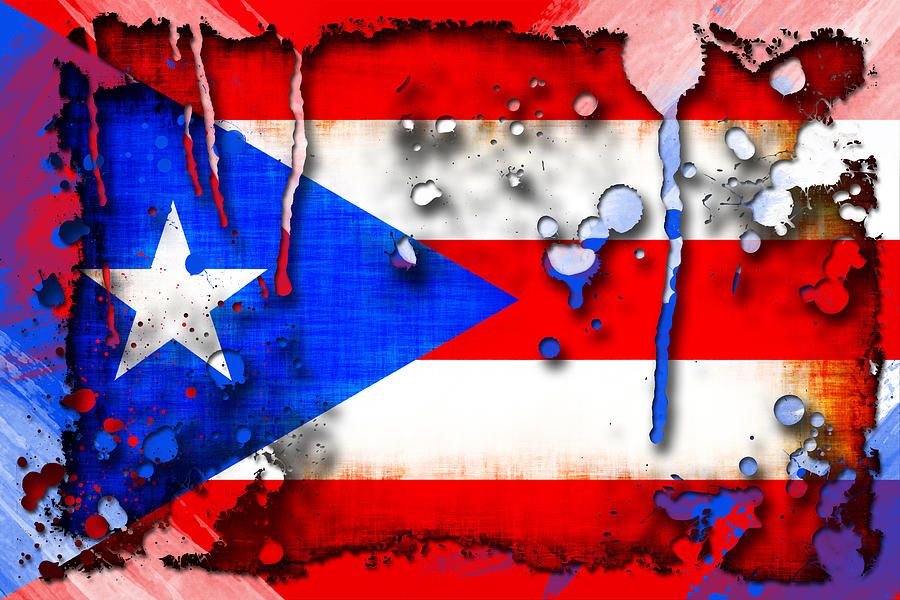
If you are not a developer, please direct your web developer to this page or provide them with the code snippet below.
Link Code
<a href=”https://www.states101.com/flags” title=”U.S. State Flags” target=”_blank”> U.S. State Flags Provided By States101.com </a>
Goto Top
Related Articles
- What is the Year Printed on State Quarters?
- Oil Boom Skews Gender Ratios to North Dakota
- List Countries with the Highest and Lowest Gender Ratios
- List of United States Postal Codes and State Abbreviations
- List of Adjectival and Demonyms for the United States
How many stars are on the US flag?
contents
Stripes: refer to the former 13 American colonies that originally formed the country. Stars: represent the 50 states of the current American federation.
How many stars are on the current US flag?
It is formed by 13 red and white horizontal stripes that represent the British colonies that made up US territory before independence, and a blue box of 50 white stars that represent the states of the federation.
What do the 27 stars on the national flag mean?
Every star that makes up the flag of Brazil has a meaning. In addition, they represent the 26 Brazilian states plus the Federal District.
The stars on the United States flag represent the 50 states of the country, while the red and white horizontal stripes symbolize the 13 English colonies that started the American nation.
How many stars are on the Brazilian flag?
The flag of Brazil contains 27 stars that represent each of the Brazilian states, including the Federal District.
USA is an abbreviation for United States of America or United States of America (USA) in Portuguese. The United States is a country made up of fifty states and a federal district, most of the country is located in the central region of North America.
What is the most beautiful flag in the world?
The flag of Serbia was chosen as the most beautiful in the world in 2022 in a survey conducted by an American company (Ranker) with the participation of one million voters.
What is the Flag of China?
The ratio of the stars signifies the unity of the people under the leadership of the CCP. The red color of the flag symbolizes the revolution of 1949, and the yellow color of the stars emphasizes the purity of the red land.
Flag of China.
| Flag of the People’s Republic of China | |
|---|---|
| Proportion | 2:3 |
| Acceptance | 27 September 1949 |
| Type | national |
What is the flag of Japan?
The flag of Japan is a white rectangular shape with a large crimson disk (representing the Sun) in the center and is officially called Nisshoki (日章旗 “Sun Flag”) in Japanese, though more commonly known as Hinomaru (日の丸).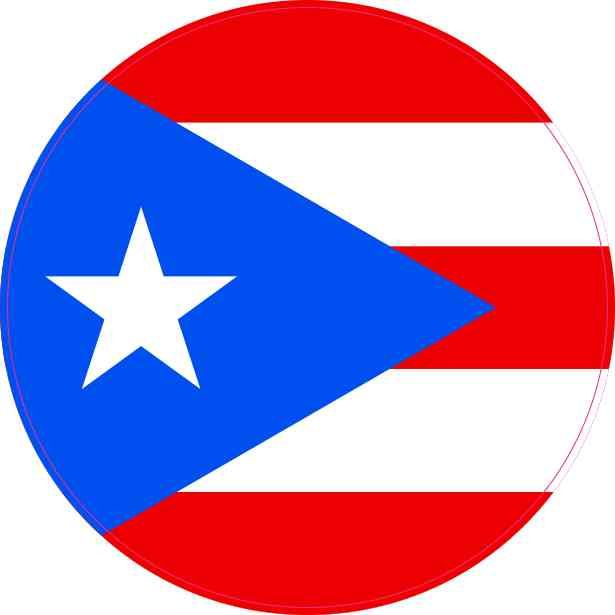 “Solar Disk”)).
“Solar Disk”)).
How many flags has Brazil had so far?
Once upon a time there were 13 flags in the country – with each change a new national symbol was created. For example, in 1815, when the country ceased to be a colony of Portugal, it adopted the flag of the United Kingdom of Portugal, Brazil and the Algarve.
Why is Pair a lone star?
The single star above the motto “Ordem e Progresso” represents the State of Para. This is because in 1889 Para was a state whose capital was to the north of the country. Belen is still there, but with the creation of the state of Roraima, Boa Vista now bears that title.
What does the lone star on the Brazilian flag mean?
The original design of the Executive branch preserved the tradition: the single star above the Order and Progress band, the so-called “Spikelet – Alpha de Virgo”, still represented the State of Para, the country’s northernmost state. at the beginning of the Republic.
youtube.com/embed/9IXJ-dgwIAk” frameborder=”0″ allow=”accelerometer; autoplay; encrypted-media; gyroscope; picture-in-picture” allowfullscreen=””/>
What’s inside the stars?
Stars are composed mainly of hydrogen and helium. These elements remain merged into a large sphere of plasma due to the strong gravitational field. By converting hydrogen into helium, they create energy in the form of electromagnetic rays. Therefore, they generate light and heat.
How many types of stars are there?
Some types of stars: white dwarfs, brown dwarfs, red giants, blue supergiants, neutron stars and variable stars.
What was the first US flag?
The Betsy Ross Flag is an antique American flag named after the upholsterer and flag maker Betsy Ross. The pattern, which has been in use since 1777, uses the common themes of alternating red and white stripes with stars in a blue canton.
What was the first flag?
The first Brazilian flag, not yet similar to the current one, was created on September 19, 1822 by decree of Don Pedro I (1798-1834). Only in 1889, with the proclamation of the republic, was the coat of arms of the Empire replaced by a blue circle, the republican coat of arms.
Only in 1889, with the proclamation of the republic, was the coat of arms of the Empire replaced by a blue circle, the republican coat of arms.
What was the first Brazilian flag?
The Order of Christ (1319-1651) was the first flag flown in Brazil. An association that sponsored the great Portuguese seafarings and its flag arrived in Brazil along with the caravels of Pedro Álvares Cabral imprinted on its sails.
What is the star of each state?
Especially for our visually impaired readers, below we write which star of each state:
- PARA – Spica (α Virginis)
- AMAZONI – Procyon (α Canis Minoris)
- MATO GROSSO DO SUL – Alphard (α Hydrae)
- ACRE – Dhanab al Shuja (γ Hydra)
- MATO-GROSSO – Sirius (α Canis Major)
What is the richest state in the US?
California, the richest state in the US, continues to lead the infamous homeless list with over 160,000 homeless people, and sadly, that number is getting worse.
Who is older Brazil or USA?
If we consider the date of the beginning of the colonization of the territory, Brazil can be considered older than the United States. However, if the date in question is the country’s independence, the United States is considered older than Brazil.
Who discovered the United States?
This holiday is celebrated on the second Monday of October to commemorate the discovery of America by Christopher Columbus on October 12, 1492.
What is the most complex flag in the world?
These are the 10 worst flags in the world.
- Haiti.
- Kyrgyzstan.
- Mozambique.
- Maldives.
- Sicily.
- Turkmenistan.
- Uganda. The animal in the center of the image is the crane, which is the national symbol of Uganda.

- See the entire photo gallery by clicking on the arrows.
What is the strangest flag in the world?
However, there are flags so creative that they seem to have no meaning!
- Isle of Man. Three stuck together legs are on the flag of the Isle of Man, located between England and Ireland.
- Frisia.
- Kyrgyzstan.
- Guam Island.
- Veneto.
- Nepal.
- Martinique.
- Ulster.
What is the Italian flag?
The flag of Italy, also known among Italians as il Tricolore, is tricolor, formed by three vertical stripes of the same size and the following colors: green (left), white (center) and red (right). The aspect ratio of the flag is 2:3.
How many country flags are there in the world?
Over 1,300 flags from all over the world are featured in an unprecedented work.
What color is Brazil?
The official colors of the Brazilian flag are green, yellow, blue and white, with the inscription “Ordem e Progresso”.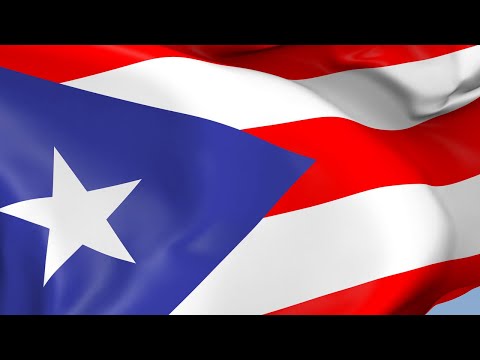 Initially, they symbolized the colors of the royal houses of the D. Pedro I family, green was the symbolic color of the royal house of Braganca, and yellow was the symbolic color of the royal house of Habsburg.
Initially, they symbolized the colors of the royal houses of the D. Pedro I family, green was the symbolic color of the royal house of Braganca, and yellow was the symbolic color of the royal house of Habsburg.
Why does Japan wear blue?
the Japanese would have chosen blue because it would represent the waters around the Japanese archipelago; blue was chosen to avoid confusion with other Asian teams that already wear red, such as China and South Korea.
What are the 5 most beautiful flags in the world?
Mexico comes in first place by a large margin, followed by Peru and the Dominican Republic. According to the latest published preview, Brazil ranked 8th behind Uruguay, Puerto Rico, Argentina and Spain. In the beginning, 104 flags competed.
Why is there no red on the Brazilian flag?
The wood of Paubrasilia echinata was used to make red paint – and if that’s where the name of our land and our people comes from, why don’t we have red on our national flag? Mainly because this land is full of its own delightful features.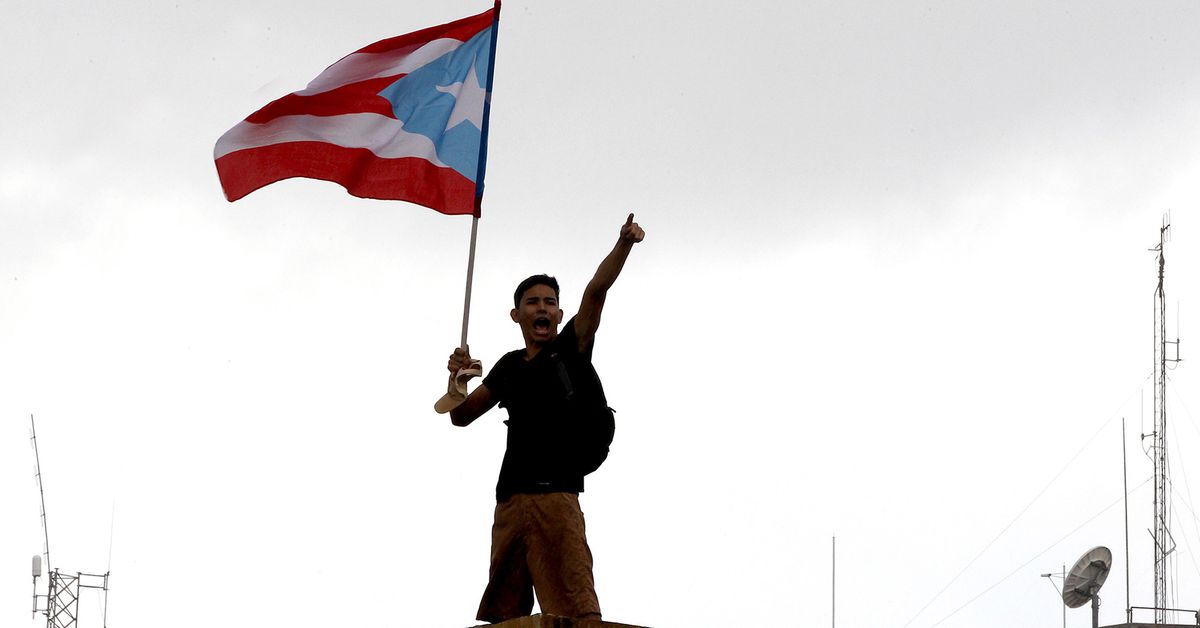
How old is our country?
Brazil’s independence turns 199 on Tuesday, September 7th. On September 7, 1822, D. Pedro 1st proclaimed a cry for independence on the banks of the Ipiranga River, and Brazil was united as an independent nation.
What is the loneliest star in the universe?
Canopus
| Canopy / Canopy | |
|---|---|
| Observational data (J2000) | |
| Constellation | Kiel (Karina) |
| Asc. straight | 06 h 23 m 57.11 s |
| declination | -52° 41′ 44.38″ |
What does the Bible say about the Star of Bethlehem?
The story of the Star of Bethlehem, also known as the Christmas Star, is told in the Christian Bible in the Gospel of Matthew: “Where is He who is born King of the Jews? for we have seen his star from the east, and have come to worship him” (Matthew 2:1-2).
Why Blink Stars?
When the atmosphere is unbalanced (excited), the star’s light is deflected in several different directions. Then the visualization of the star gets small changes in its brightness and where it is, and in doing so, it starts blinking.
Who was the creator of the Brazilian flag?
The creation of the Brazilian flag was ratified by decree of d. Pedro (not yet proclaimed and crowned emperor), September 18, 1822. The colors of the flag were chosen by d. Pedro, and the design of the flag was the work of the French artist Jean-Baptiste Debray.
Why the star on the flag and Para?
The single star above the motto “Ordem e Progresso” represents the State of Para. This is because in 1889 Para was a state whose capital was to the north of the country.
How many white pentagrams are on the Brazilian flag?
A blue circle with 27 white five-pointed stars replaced the coat of arms of the Empire. The stars, whose position on the flag reflects the sky over the capital Rio de Janeiro on November 15, 1889, represent federal units – each star represents a specific state, in addition to the Federal District.
How many stars die per day?
20, 1991] The stars appear to be eternal, but they are not. They are born, live and die. Even the Sun, which is a star (and not a big one), will also go out one day.
What is the largest star in existence?
1st – VY Canis Major: Also known as VY Cma, this hypergiant has a reddish glow and is 2,100 times the diameter of the Sun. To have an idea of its size, almost three billion planets equal to the Earth would fit inside it.
Flying the flag backwards is also a military code, meaning that the territory is captured by the enemy. In other contexts, the act is considered a mockery and disrespect for the nation.
In what five years did the US change the stars on its flag?
The flag with 48 stars operated for 47 years until the official version with 1959 stars became official on July 49, 4. The 50-star flag was commissioned by then-President Eisenhower on August 21, 1959 and was adopted on July 19.60 years old.
What do the colors of our flag represent?
Green represents forests, yellow represents gold and blue represents the Brazilian sky.
What is the national symbol of the USA?
The North American bald eagle is no longer listed as an endangered species. She is one of the national symbols of the United States and has been endangered for 32 years.
Cases where athletes compete in the Olympic Games under a neutral flag. Dossier
December 5, 2017, 19:55
TASS-DOSIER. On December 5, 2017, the International Olympic Committee (IOC) suspended the membership of the Russian Olympic Committee (ROC) in the organization and suspended the Russian team from participating in the XXIII Winter Olympic Games in Pyeongchang (Republic of Korea, February 9-25, 2018) due to the systematic anti-doping rule violations. At the same time, the IOC intends to respect the rights of clean athletes: athletes who meet the proposed criteria will compete at the Games in the status of “Olympic athlete from Russia. ” The editors of TASS-DOSIER compiled a selection of cases when athletes competed at the Games under a neutral flag.
” The editors of TASS-DOSIER compiled a selection of cases when athletes competed at the Games under a neutral flag.
What is the neutral (Olympic) flag
The neutral (Olympic) flag is a white cloth with the Olympic symbol in the center – five interlaced rings of blue, yellow, black, green and red, symbolizing the unity of the five continents. Under it, athletes have the right to compete at the Olympics if the national Olympic Committee of the country they represent is temporarily deprived of IOC recognition or is in the process of formation, as well as in a number of other cases. Previously, due to the suspension of the membership of their Olympic committees, athletes from India (2014) and Kuwait (2016) competed under a neutral flag.
The first appearance of athletes at the Games under the Olympic flag took place in Moscow in 1980. Some athletes had previously attempted to compete under the Olympic banner – usually for political reasons – but the IOC rejected their requests.
Moscow-1980
The 1980 XXII Summer Olympic Games in Moscow were boycotted by the USA, Canada, Germany and about 50 other states. The reason was the entry of Soviet troops into Afghanistan in 1979. Athletes from these countries did not come to the Games. Representatives from Australia, Andorra, Belgium, Great Britain, Denmark, Ireland, Italy, Luxembourg, the Netherlands, Puerto Rico, San Marino, France and Switzerland took part in the Olympics, but competed under the Olympic flag.
Athletes from Spain, New Zealand and Portugal also came to Moscow, but competed under the flags of the National Olympic Committees, not their own countries. The winners of the competitions, who competed under the Olympic flag, were Italian judoka Ezio Gamba (since 2008 – head coach, general manager of the Russian national judo team), British runner Sebastian Coe (since 2015 – president of the International Association of Athletics Federations), etc.
Albertville-1992
After the collapse of the USSR, representatives of six former Soviet republics – Russia, Armenia, Belarus, Kazakhstan, Uzbekistan and Ukraine – spoke on February 1992 a single team under the Olympic flag at the XVI Winter Games in Albertville (France).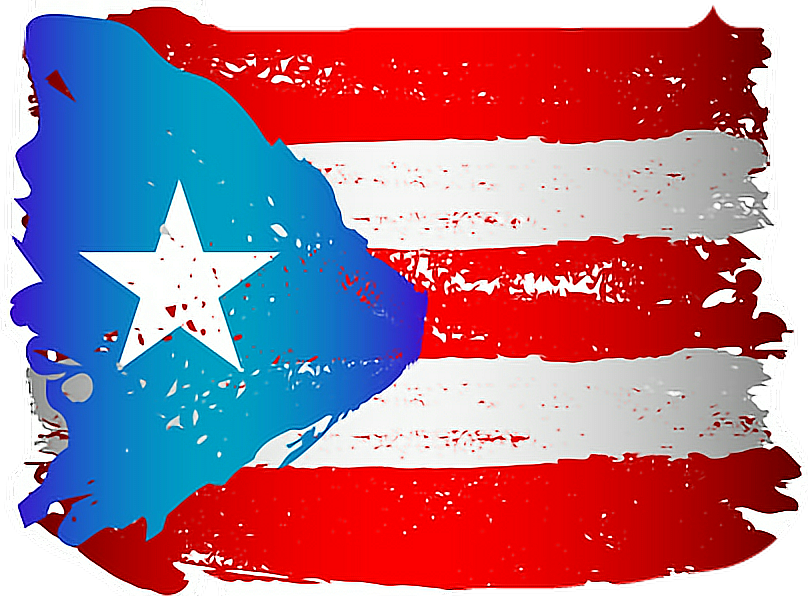 The national team received the official name of the United Team, its members, despite the performance under a neutral flag, were not considered neutral athletes. The combined team won nine gold medals, finishing second behind Germany, which received ten gold medals.
The national team received the official name of the United Team, its members, despite the performance under a neutral flag, were not considered neutral athletes. The combined team won nine gold medals, finishing second behind Germany, which received ten gold medals.
Barcelona-1992
After the collapse of the USSR, representatives of 12 former Soviet republics (with the exception of Lithuania, Latvia and Estonia) spoke in July – August 1992 a single team under the Olympic flag at the XXV Summer Games in Barcelona (Spain). The combined team won 45 gold medals and took first place in this indicator.
In connection with the UN international sanctions against the Federal Republic of Yugoslavia, representatives of this country, as well as the Republic of Macedonia – a total of 58 athletes in 13 sports – competed at the Games in Barcelona under the Olympic flag. To distinguish them from the United Team of the Former Soviet Republics, its athletes were signed as Independent Olympic Participants (IOP). Jasna Šekarić won a silver medal in shooting, Aranka Binder and Stevan Pletikosic received bronze medals in the same sport.
Jasna Šekarić won a silver medal in shooting, Aranka Binder and Stevan Pletikosic received bronze medals in the same sport.
Sydney 2000
In 2000, East Timor was in the process of gaining independence from Indonesia (proclaimed May 20, 2002) and did not have a National Olympic Committee. However, four athletes from this country were allowed to compete at the XXVII Summer Games in Sydney (Australia) under the Olympic flag. They were weightlifter Martinho de Araujo (took 20th place), boxer Victor Ramos (dropped out in the first round), marathon runners Calisto da Costa (71st place among men) and Agida Amaral (43rd place among women).
London 2012
On October 10, 2010, as a result of constitutional reform, the Netherlands Antilles, an autonomy within the Netherlands, ceased to exist. Instead, self-governing state formations of Curaçao and Sint Maarten, as well as the communities of Bonaire, Sint Eustatius and Saba (all part of the Netherlands) arose.
The Olympic Committee of the Netherlands Antilles was expelled from the IOC in July 2011.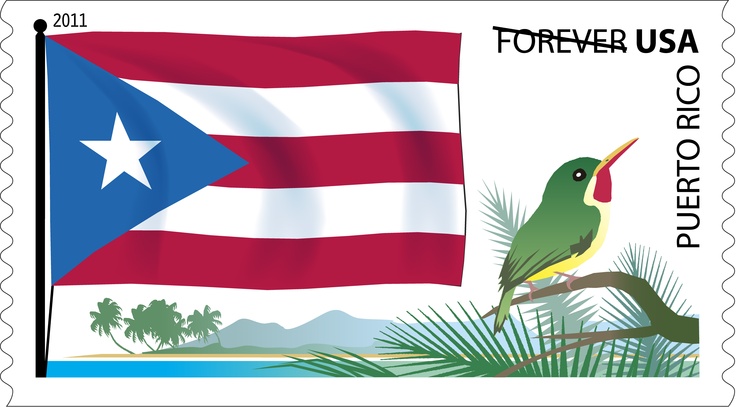 Athletes who qualified for the XXX Summer Games 2012 in London (UK) were given the right to compete under the Olympic flag, or as representatives of the Netherlands or Aruba . As a result, the former Netherlands Antilles fielded a team of three athletes under the Olympic flag. Runner Limarvin Bonevasia made it to the semi-finals in the 400m race, judoka Reginald de Windt lost in the first round to Russian Ivan Nifontov, and Filipina van Aanholt took part in the sailing competition (36th place in the Laser-Radial class).
Athletes who qualified for the XXX Summer Games 2012 in London (UK) were given the right to compete under the Olympic flag, or as representatives of the Netherlands or Aruba . As a result, the former Netherlands Antilles fielded a team of three athletes under the Olympic flag. Runner Limarvin Bonevasia made it to the semi-finals in the 400m race, judoka Reginald de Windt lost in the first round to Russian Ivan Nifontov, and Filipina van Aanholt took part in the sailing competition (36th place in the Laser-Radial class).
Marathon runner Guor Marial, who was born in South Sudan, a state that at the time of the Games did not have a national Olympic Committee, also competed under a neutral flag (South Sudan gained independence on July 9, 2011). At the Games, Marial finished 47th.
Sochi-2014
At the XXII Winter Olympics 2014 in Sochi (Krasnodar Territory), athletes from India had to compete under the Olympic flag. The reason was that in December 2012 the IOC withdrew its recognition from the Olympic Association of India (OAI). The election of its next composition was held on the basis of the sports code approved by the government of the country, which is a violation of the IOC requirement for the autonomy of Olympic organizations and the prevention of interference in their work by government bodies. 8-9February luger Shiva Keshavan managed to perform under a neutral flag.
The election of its next composition was held on the basis of the sports code approved by the government of the country, which is a violation of the IOC requirement for the autonomy of Olympic organizations and the prevention of interference in their work by government bodies. 8-9February luger Shiva Keshavan managed to perform under a neutral flag.
However, already on February 11, the International Olympic Committee restored the recognition of the OAI. Due to this decision, Indian athletes acquired the right to participate in the Games under the flag of their country: skier Nadeem Iqbal and skier Himanshu Thakur officially represented India in the following competition days.
Rio de Janeiro-2016
At the XXXI Summer Games in Rio de Janeiro (Brazil), a refugee team competed under the Olympic flag. It included ten athletes from four countries – South Sudan, Syria, the Democratic Republic of the Congo and Ethiopia. Six men and four women took part in athletics, swimming and judo competitions, but none of them showed high results.
